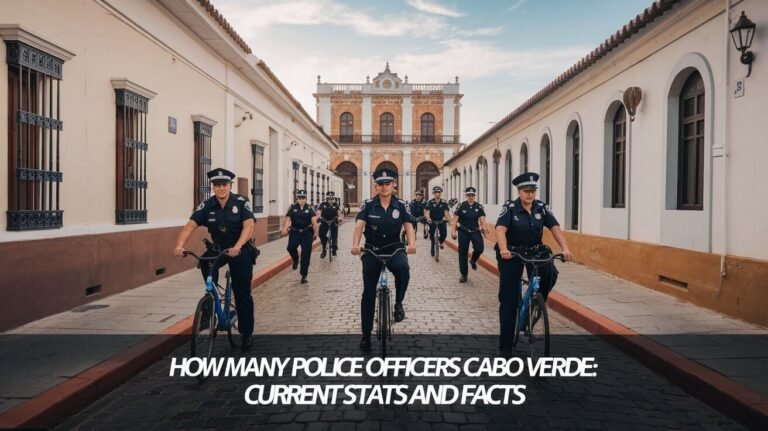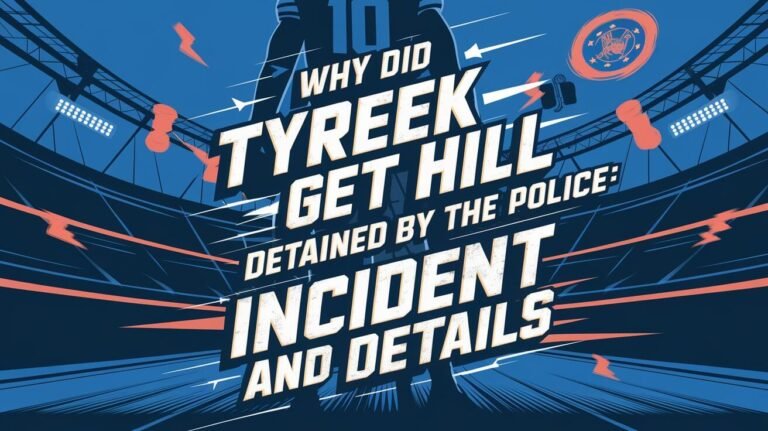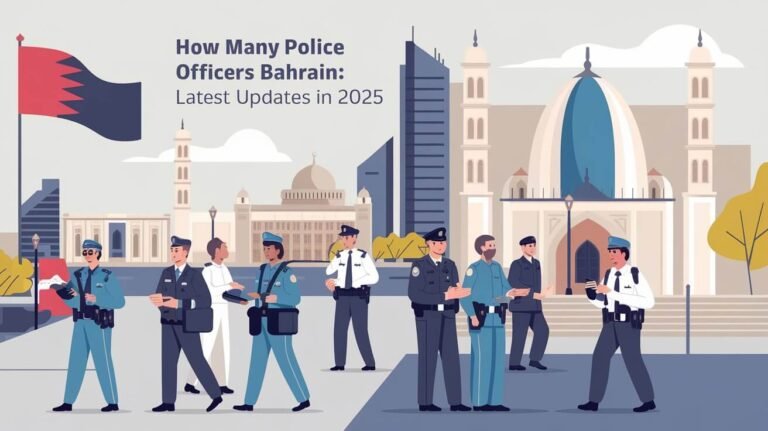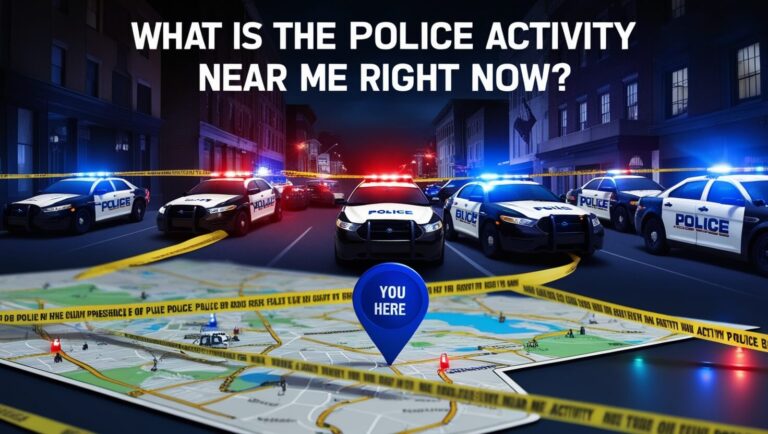How Many Car Manufacturers In The Us Build Police Cars?
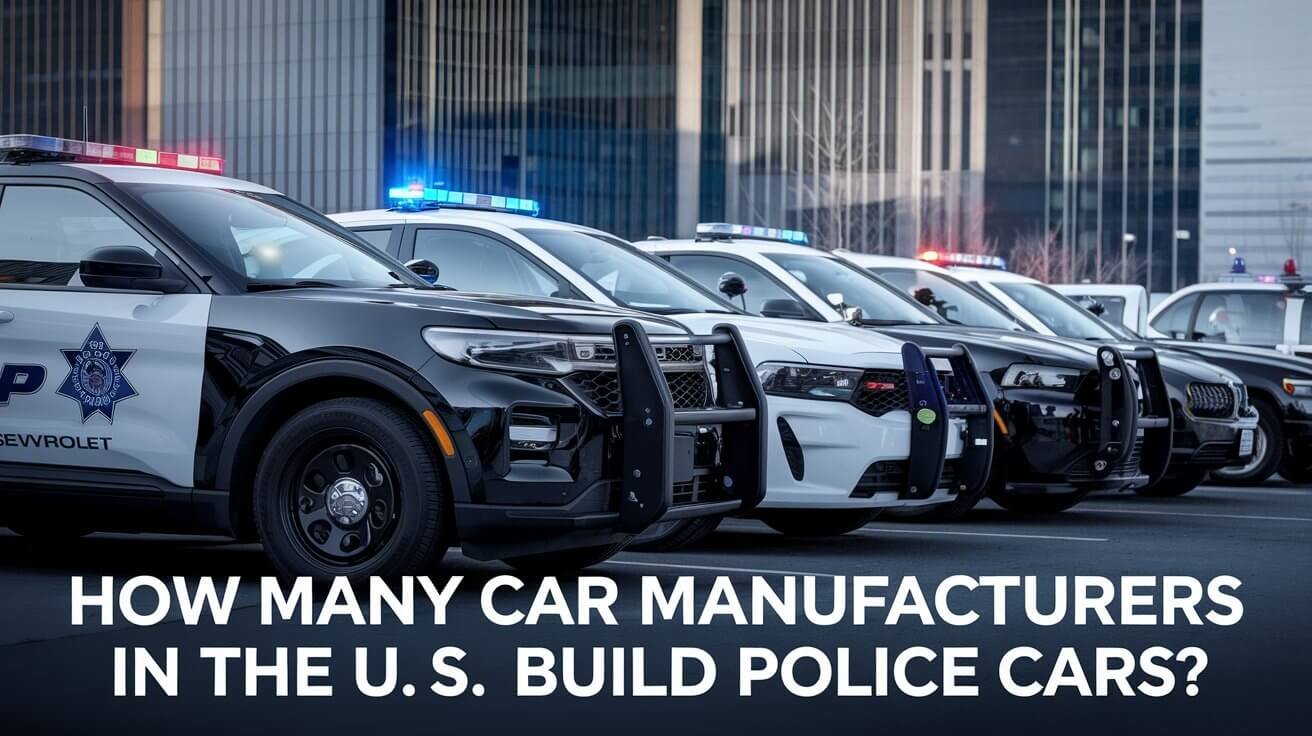
In the United States, three main car makers build police cars: Chevrolet, Dodge, and Ford. They offer a variety of police vehicles, from sedans to SUVs. These cars are designed to meet law enforcement’s specific needs.
Police cars like the Ford Police Interceptor Utility are used by many police departments. The need for reliable and efficient cars has led to constant updates in the industry. This ensures police cars keep up with the changing needs of law enforcement.
About 250,000 to 300,000 vehicles are used by police in the US. This shows how important police vehicles are for public safety. Cars like the Ford PIU, Dodge Charger Pursuit, and Chevy Tahoe PPV are common in US police fleets.
As the industry grows, it’s key to learn about police vehicles and their makers. We should understand their role in the police vehicle market. And how their cars impact public safety.
Major Police Vehicle Manufacturers in America
Law enforcement in the U.S. needs vehicles that are fast, safe, and practical. The Ford Police Interceptor, Chevrolet Tahoe PPV, and Dodge Charger Pursuit are top picks. They come with special engines, tinted windows, and bulletproof glass.
These major manufacturers offer a variety of models. Each vehicle has unique features and benefits. Some key ones include:
- High-performance engines, such as the 3L EcoBoost in the Ford Police Interceptor Utility
- Advanced safety features, including bulletproof glass and reinforced doors
- Customizable communication equipment, such as radios and computers
- Enhanced ergonomics, including adjustable seats and steering wheels
Ford Motor Company Fleet Division
Ford’s Police Interceptor Utility is a hit with police. It’s fast and agile. The Ford Police Interceptor Utility 3L EcoBoost AWD was the fastest in tests.
Dodge Law Enforcement
Dodge’s Charger Pursuit is also popular. It has a strong 5.7L V8 engine and safety features. The Dodge Charger 5.7L RWD reached 139 mph in tests, close to the Ford’s speed.
Chevrolet Police Vehicles
Chevrolet’s Tahoe PPV is a favorite for police. It has a 5.3L V8 engine and can tow a lot. It also has safety features like a rearview camera and parking sensors.
Police Interceptor Vehicle Specifications
Police interceptor vehicles are key to law enforcement’s success. Models like the Ford Police Interceptor Utility, Chevrolet Tahoe PPV, and Dodge Charger Pursuit are favorites. They are built for police work, with strong engines, advanced transmissions, and powerful brakes.
Each manufacturer has its own take on these vehicles. For example, the Ford F-150 Police Responder has a 400 hp engine. The Chevrolet Blazer EV SS PPV has a 557 hp engine. The Dodge Durango Pursuit has a 360 hp engine. These differences show how each company prioritizes speed, agility, or durability.
Police interceptors come with many important features. These include:
- Advanced engine management systems for better performance and fuel use
- Enhanced safety features like airbags, anti-lock brakes, and electronic stability control
- Special communication gear, including radios, computers, and emergency lights
- Strong frames and body structures for handling crashes and rough terrain
The specs of police interceptors are vital for keeping officers safe and effective. Knowing what each vehicle can do helps police departments choose the right ones. This choice is key to serving and protecting their communities well.
Custom Features of American Police Cars
American police cars are made to fit the needs of law enforcement. They have special features for better performance, safety, and use. Engine upgrades are a big part of this, making the cars fast and ready for emergencies.
Police cars also get safety gear like bulletproof vests and helmets. They have advanced communication systems too. These help officers talk to dispatch and other teams quickly. Some cars, like SWAT vehicles, are built for dangerous jobs.
Engine Modifications and Safety Equipment
Some examples of custom features in American police cars include:
- Engine upgrades, such as the 5.3L V8 engine in the Chevrolet Tahoe PPV
- Safety equipment, such as the HD Rear Vision Camera and Rear Park Assist in the Chevrolet Tahoe
- Advanced communication systems, such as the standard 17.7-inch display with Google compatibility in the Chevrolet Blazer EV PPV
These special features help police officers do their job well. They make the cars fast, safe, and useful. Engine upgrades, safety gear, and communication systems all play a part in this.
| Vehicle Model | Engine | Safety Features |
|---|---|---|
| Chevrolet Tahoe PPV | 5.3L V8 | HD Rear Vision Camera, Rear Park Assist |
| Chevrolet Blazer EV PPV | Dual Motor AWD | Standard 17.7-inch display with Google compatibility |
How Many Car Manufacturers in the US Build Police Cars
Many US car makers build police cars. Ford, Chevrolet, and Dodge are some of them. They make a variety of police vehicles, from sedans to SUVs. This shows how different the needs of law enforcement are across the country.
Some famous police cars include the Ford Police Interceptor Utility, the Chevrolet Tahoe Police Pursuit, and the Dodge Charger Police. These cars are made to fit the needs of police. They have better performance, safety features, and communication systems.
US car makers are also making police cars more eco-friendly. For example, the 2025 Ford Police Interceptor Utility hybrid is the only hybrid police car in the US. It’s good for the environment and saves fuel, making it a great choice for police.
- Ford: Offers a range of police vehicles, including the Police Interceptor Utility and the F-150 Police Responder
- Chevrolet: Produces police vehicles such as the Tahoe Police Pursuit and the Silverado Police Pursuit
- Dodge: Manufactures police cars like the Charger Police and the Durango Special Service
Many US car manufacturers make police cars. Each offers different vehicles for law enforcement. With new hybrid and electric options, the police car market is getting more innovative and green.
Police Vehicle Testing Procedures
Police vehicles go through tough tests to make sure they’re ready for law enforcement. The Michigan State Police and the Los Angeles County Sheriff test their vehicles. These tests check how well the vehicles perform, stay safe, and last long.
These tests include speeding up, stopping, and handling tests. For example, the Michigan State Police test how fast a vehicle can go from 0 to 60 mph. They also check the vehicle’s top speed and how well it brakes. These tests help pick the best vehicles for police work.
Michigan State Police Evaluations
The Michigan State Police tests are key in checking police vehicles. They push the vehicles hard to see how they do in different situations. The tests help decide if a vehicle is good for high-speed chases.
Los Angeles County Sheriff Testing
The Los Angeles County Sheriff also tests police vehicles. They do a driving test and a braking test. These tests help figure out which vehicles are best for police work.
| Vehicle | Top Speed | 0-60 mph Acceleration | Braking Distance |
|---|---|---|---|
| Ford PI Utility Hybrid AWD | 136 mph | 5.72 seconds | 131.5 feet |
| Dodge Charger 5.7L RWD | 140 mph | 6.01 seconds | 122.80 feet |
| Chevrolet Tahoe 5.3L RWD | 130 mph | 7.38 seconds | 140.2 feet |
Testing police vehicles is very important. It helps make sure they are safe and work well. By testing vehicles, police can choose the best ones. This helps keep officers and the public safe.
Market Share Distribution Among Manufacturers
The market share of police vehicle manufacturers is key in the industry. Ford, GM, and Stellantis lead in producing police cars in the U.S. Ford has contracts for more than half of police vehicles. Their focus on bigger, heavier cars like the Ford Expedition XL Max SSV and the F-150 Lightning Pro SSV helps them stay on top.
The market share among police vehicle makers looks like this:
- Ford: 50-60%
- GM: 20-30%
- Stellantis: 10-20%
This breakdown comes from data from the Michigan State Police Precision Driving Unit and industry reports.
Police car market is changing, moving towards bigger and heavier vehicles. This change is because police need to keep up with criminals’ cars. But, it also worries about safety for pedestrians and the environment.
| Manufacturer | Market Share | Popular Models |
|---|---|---|
| Ford | 50-60% | Expedition XL Max SSV, F-150 Lightning Pro SSV |
| GM | 20-30% | Chevy Tahoe PPV |
| Stellantis | 10-20% | Dodge Ram trucks, Dodge Chargers |
Market share among police vehicle makers is complex and always changing. It will be exciting to see how the big players adjust to new trends and tech.
Police Fleet Vehicle Requirements
Police fleet vehicles need to meet certain standards to work well and safely. They must pass tests for performance, safety, and how long they last.
Performance Standards
Police cars must be fast, stop well, and handle well. These are key to respond quickly and safely in emergencies.
Safety Certifications
Police cars also need safety certifications. These make sure the cars pass crash tests and protect people inside.
Durability Benchmarks
Police cars must also be tough. They need to handle frequent use and harsh conditions well.
Police fleet vehicles have important features. These include:
- Enhanced safety and security features
- Heavy-duty components for better durability and reliability
- Improved resale value
Meeting these standards helps police cars do their job well. The performance standards are key to their design and function. Manufacturers must make sure their cars meet these standards for safety and reliability.
| Manufacturer | Model | Performance Standards |
|---|---|---|
| Ford | Police Interceptor | Acceleration: 0-60 mph in 5.9 seconds |
| Chevrolet | Caprice PPV | Top speed: 148 mph |
| Dodge | Charger Pursuit | Braking distance: 128 feet |
Cost Analysis of Police Vehicles
The cost of police vehicles is a big deal for law enforcement. When looking at the cost, we consider the initial price, upkeep, and fuel. For example, the Greensboro Police Department spent $1.1 million on 20 extra cars. Each car cost between $50,000 and $55,000.
A study by the National Bureau of Standards shows why we need to look at the whole cost. They say using a life cycle costing (LCC) method is key. This method helps compare costs over time. It shows the best choices for managing police fleets.
| Vehicle Type | Initial Purchase Price | Maintenance Costs | Fuel Costs |
|---|---|---|---|
| Ford Police Interceptor Utility | $50,000 – $55,000 | $5,000 – $10,000 per year | $2,000 – $5,000 per year |
By looking at these factors and using LCC, police can make better choices. They can save money and work more efficiently.
Discontinued Police Car Models
Over the years, many police car models have been replaced by newer ones. The Crown Victoria and the Caprice Police Pursuit are two examples. The Crown Victoria, made by Ford, was used by police for over 30 years until 2011.
The Crown Victoria was known for its durability and reliability. It was a favorite among police. But, new models and technology led to its end. The Caprice Police Pursuit was used for high-speed operations.
Notable Discontinued Police Cars
- Studebaker police cars (1959)
- Chevrolet Corvair police package (1961-1962)
- Police Chevy II (1962-1964)
- Chrysler Enforcer (1961-1964)
- Rambler police cars (1963)
Newer models like the Ford Police Interceptor Sedan and the Dodge Charger replaced them. The Ford Police Interceptor Sedan was based on the Ford Taurus. The Dodge Charger, with its V8 engine, is now a top choice for police.
| Model | Year | Engine |
|---|---|---|
| Crown Victoria | 1979-2011 | V8 |
| Caprice Police Pursuit | 2011-2017 | V8 |
| Ford Police Interceptor Sedan | 2013-2018 | V6 |
The end of these models led to the creation of newer, advanced vehicles. As technology grows, we’ll see even more innovative police cars.
Current Production Facilities
The U.S. automotive industry is key in making police vehicles. Over 50 factories across the country help meet this demand. Ford, Chevrolet, and Dodge lead in producing a variety of police cars.
Some important features of these facilities include:
- Multiple factory locations within the U.S. for popular models
- Increased production capacity to meet the growing demand for police vehicles
- Introduction of new models, such as the 2025 Chevrolet Blazer EV PPV, which is the only pursuit-rated, purpose-built police package EV in its segment
These facilities can make police cars with the latest tech. This includes electric drives, heavy-duty suspension, and special performance settings. As electric cars become more popular, production is expected to rise.
These cars are made to fit law enforcement’s needs. They have lots of room, special seats, and top-notch safety features. The factories also prepare for adding police-specific gear, like lights and comms systems.
Police Vehicle Innovation Trends
Law enforcement agencies are moving towards new police vehicles. They are focusing on electric cars and cars that can drive themselves. This change aims to make law enforcement safer, more efficient, and effective.
Electric police cars are becoming more common. For example, the Fremont Police Department has Tesla EVs and other hybrid or electric cars. They also have hybrid or electric Ford Fusions, Explorers, Chrysler Pacifica hybrids, and Toyota Priuses.
Autonomous Features and Electric Police Vehicles
Autonomous features are being explored, which could change police work. The FBI sees vehicular autonomy as a big change for law enforcement. Companies like Motorola are working on autonomous vehicles with advanced tech.
Some benefits of these new police vehicles include:
- Improved safety for officers and the public
- Increased efficiency in law enforcement operations
- Reduced environmental impact with electric police vehicles
As innovation in police vehicles grows, we’ll see more electric and self-driving cars. This will help law enforcement agencies across the United States do their jobs better.
Final Note
World of police vehicles in the United States is always changing. From the famous Ford Police Interceptor to the tough Dodge Charger Pursuit, American car makers keep finding new ways to help law enforcement. They meet the tough needs of police agencies all over the country.
The move to SUVs as the top choice for police cars shows how important being flexible and useful is. SUVs offer more room, better views, and handle all kinds of weather well. This makes them the best choice for many police departments.
The future of police cars looks bright with new tech like electric cars, self-driving features, and better communication tools. As police start using these new technologies, they will be able to keep everyone safer. This will help protect both the police and the communities they serve.
In short, police cars play a huge role in keeping us safe. By focusing on new ideas and the changing needs of police, American car makers and leaders can make sure the police vehicles of tomorrow are better than ever.
Common Questions
How many car manufacturers in the US build police cars?
Many car makers in the US make police cars. This shows the wide range of options available. We’ll look at who makes these vehicles and why.
Who are the major police vehicle manufacturers in America?
Big names like Ford, Dodge, and Chevrolet lead in making police cars. They have special divisions for law enforcement. We’ll see what makes their cars popular with police.
What are the specifications of police interceptor vehicles?
Police interceptor vehicles are built for high performance and safety. They have strong engines, good transmissions, and strong brakes. This makes them perfect for police work.
What are the custom features of American police cars?
American police cars get special upgrades for better performance and safety. These include engine tweaks, safety gear, and communication systems. These changes help police cars meet law enforcement needs.
What are the testing procedures for police vehicles?
Police vehicles go through tough tests to ensure they’re up to standard. The Michigan State Police and Los Angeles County Sheriff test them. These tests check their performance and safety.
What is the market share distribution among police vehicle manufacturers?
Some car makers have a bigger share of the police vehicle market. We’ll look at who leads and why. This includes the most popular models and what police like.
What are the requirements for police fleet vehicles?
Police fleet vehicles must meet strict standards. They need to perform well, be safe, and last long. We’ll see what makes them meet these high expectations.
How much do police vehicles cost?
Police vehicles vary in price, depending on several factors. We’ll break down the costs, including the initial price, upkeep, and fuel. This helps understand the budget for police cars.
What are some discontinued police car models?
Some police car models are no longer made. We’ll look at their history, features, and impact. This includes why they were stopped and what new models offer.
Where are police vehicles currently produced?
Police vehicles are made in various places, depending on demand and resources. We’ll explore where they’re made and why. This includes the capacity of these facilities.
What are the innovation trends in police vehicles?
Police vehicles are getting new tech, like electric models and autonomous features. We’ll discuss the benefits and challenges of these advancements. This includes their impact on safety and the environment.

